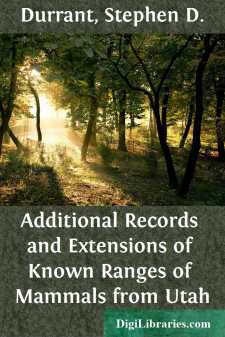Categories
- Antiques & Collectibles 13
- Architecture 36
- Art 48
- Bibles 22
- Biography & Autobiography 813
- Body, Mind & Spirit 142
- Business & Economics 28
- Children's Books 15
- Children's Fiction 12
- Computers 4
- Cooking 94
- Crafts & Hobbies 4
- Drama 346
- Education 46
- Family & Relationships 57
- Fiction 11828
- Games 19
- Gardening 17
- Health & Fitness 34
- History 1377
- House & Home 1
- Humor 147
- Juvenile Fiction 1873
- Juvenile Nonfiction 202
- Language Arts & Disciplines 88
- Law 16
- Literary Collections 686
- Literary Criticism 179
- Mathematics 13
- Medical 41
- Music 40
- Nature 179
- Non-Classifiable 1768
- Performing Arts 7
- Periodicals 1453
- Philosophy 64
- Photography 2
- Poetry 896
- Political Science 203
- Psychology 42
- Reference 154
- Religion 513
- Science 126
- Self-Help 84
- Social Science 81
- Sports & Recreation 34
- Study Aids 3
- Technology & Engineering 59
- Transportation 23
- Travel 463
- True Crime 29
Additional Records and Extensions of Known Ranges of Mammals from Utah
Description:
Excerpt
The Museum of Zoology, University of Utah, contains approximately 5000 specimens in addition to those available to Durrant (1952) when he prepared his account of the "Mammals of Utah, Taxonomy and Distribution." Study of this material discloses two kinds of mammals not heretofore known to occur in Utah, and extends the known limits of occurrence of many others as is set forth below in what may be thought of as a supplement to the aforementioned report of 1952.
Our study was financed in part by a grant from the National Science Foundation.
Sorex vagrans obscurus Merriam. Dusky Shrew.—Twelve specimens are available from the Abajo Mountains and Elk Ridge, San Juan County, Utah, as follows: North Creek, 6 mi. W Monticello, 8300 ft.; 1 mi. S Twin Peaks, 9500 ft.; Kigalia R. S., 8000 ft.; and Gooseberry R. S., 8250 ft. Previously, the only known specimens from east of the Colorado River in Utah were from the La Sal Mountains in extreme eastern Grand County and extreme northern San Juan County. These twelve specimens extend the known area of occurrence of the species in Utah approximately 80 miles to the south, and indicate that this shrew occurs throughout the state in favorable habitats.
Sorex palustris navigator (Baird). Water Shrew.—An individual was observed by M. Raymond Lee at North Creek, seven miles west of Monticello, Abajo Mountains, 8000 feet, San Juan County, on July 10, 1954. Usually we are extremely reluctant to record sight records, but do so in this instance because the water shrew is so distinctive that it can be readily recognized and because the occurrence extends the known range approximately 80 miles southward in Utah. This individual was observed at close range while swimming and foraging in North Creek, and there can be no doubt of its identity.
Myotis yumanensis yumanensis (H. Allen). Yuma Myotis.—Durrant (1952:43) reported this subspecies from Utah on the authority of Hardy (1941:289) who had specimens from two localities in extreme southwestern Utah. Durrant (1952:41) referred specimen Number 6784, from Willow Creek, 25 miles south of Ouray, Uintah County, to Myotis lucifugus carissima. Restudy of this specimen reveals that it is Myotis yumanensis yumanensis. This identification has been corroborated by Dr. Philip H. Krutzsch, University of Pittsburgh, Pennsylvania, and extends the known range of the subspecies M. y. yumanensis approximately 300 miles northeastward in Utah. See also Krutzsch and Heppenstall (1955:126) who record specimens from 2 mi. SW Jensen.
Myotis subulatus melanorhinus (Merriam). Small-footed Myotis.—This bat previously was known from only seven localities in Utah, which indicated that it occurred in only the western and southern areas of the state. Four additional records are now available from the following localities: Logan Canyon Cave, 15 miles north of Logan, Cache County; Weber College Campus, Ogden, Weber County; University of Utah Campus, Salt Lake City, Salt Lake County; Six Mile Canyon, 3-1/2 miles east of Sterling, Sanpete County. These occurrences extend the known range to the eastward in Utah, and indicate a state-wide distribution. Specimens of the subspecies Myotis s. melanorhinus are recorded also from as far north as Double Springs, Custer County, Idaho (Davis, 1939:117).
Pipestrellus hesperus hesperus (H. Allen). Western Pipistrelle.—Heretofore, the northernmost known specimens of this bat from Utah were from Old Lincoln Highway, 18 miles southwest of Orr's Ranch, Tooele County....


